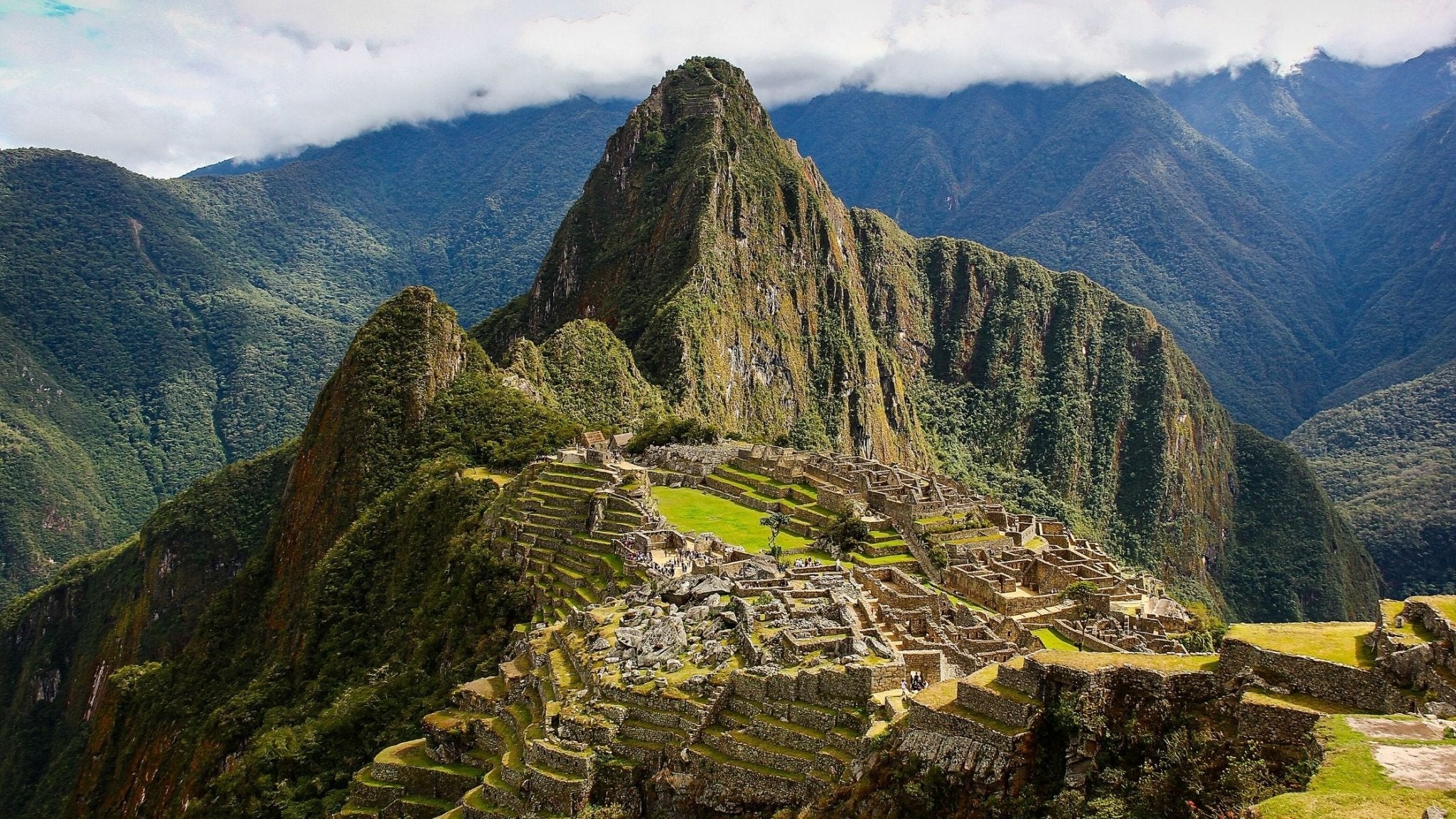Nestled high in the Andes mountains of Peru, the historical site of Machu Picchu draws hundreds of thousands of visitors to explore its wonder and mysteries.
Machu Picchu means “old peak” or “old mountain” in Quechua, the native language of the area.
Reclaimed From The Jungle
It was brought to the attention of the world by a man named Hiram Bingham in about 1911. He was searching for a last stronghold of the Incan Empire, Vilcabamba.
His searching brought him to a small village and they told him of an abandoned place in the mountains west of Cusco.
Hiram called it the Lost City of the Inca. It wasn’t necessarily “lost” though. The locals knew about the place that had been taken over by the jungle.
The whole site wasn’t completely abandoned. There were families of farmers who had cleared and were using the terraces built by the Incas for crops. The terraces were used in the same way by the Incas to grow their crops.

Built with optimal drainage to account for the rainy season, they still provide protection from mudslides, erosion, and flooding.

The Theories About Machu Picchu
No one is really sure of the purpose of Machu Picchu. Some archaeologists and historians think it was a sanctuary. Some think the location held religious significance.
The most impressive buildings on the site are the Torreon or Temple of the Sun, the Inti Mach’ay, which is a cave that was used for special ceremonies during their summer solstice in December, and the Intinuatana stone. The stone is thought to have been an astrological clock or calendar used by the Incas.

Through the archaeological exploration of the site, it’s believed to have been built as an estate for the Incan emperor Pachacuti. He ruled from about 1438 until 1472. The area remained a stronghold until it was abandoned in 1510.
This was just before the invasion of the area by the Spanish conquistadors.
Machu Picchu was left to the surrounding jungle and the Spaniards never discovered it, even though it was only about 50 miles from Cusco. The stonework and intricate carvings were left untouched and undamaged for more than 400 years.
Amazing Architecture of Machu Picchu
Built on two fault lines, the Incas made use of the surrounding rocks and their architectural skills to create structures that have withstood the many earthquakes that occur in the area.
They were masters of a technique called ashlar. They cut and shaped the stones to fit tightly together without the use of mortar to hold them together. The carved and polished stones still fit together so well that a piece of paper can’t even be slid in between the joints.

Because of the building methods the Incas used, without draft animals, mortar, and metal tools, Machu Picchu is known as an engineering wonder.
The towns of Lima and Cusco both have been leveled by massive earthquakes that plague the area. The stones in the buildings of the site are said to “dance” when a quake occurs. They simply bounce through the tremors and fall back into place!
In 1983 Machu Picchu was named a world heritage site by UNESCO. They are the United Nations Educational, Scientific, and Cultural Organization.
Machu Picchu is also one of the New Seven Wonder of the World. Chosen from a selection of 200 monuments, it ranks with the Great Wall of China, the Colosseum in Rome, the Taj Mahal in India, and the Mayan city of Chiche’n Itza’ in Yucatan, Mexico.
The Inca Builders of Machu Picchu
The Inca Empire was impressive, if short-lived. Beginning in Cusco, the Inca eventually spread and built up their holdings to cover an area that reached as far north as Ecuador and stretched all the way to Santiago, Chile. It was the largest in its time, and the largest empire ever in the Americas, stretching down the west coast of South America.

The civilization flourished between 1400 and 1533. They were well known for their architecture, and working with gold and silver. One of their temples, built-in Cusco, was covered in gold plates, studded with emeralds. The Coricancha complex was also called the Temple of the Sun.

They didn’t have a system of writing, and much of their history was passed on through oral traditions and storytelling. What was known about the people and structures they built was learned from the Spanish conquistadors and priests and the journals they kept.
Arriving in western South America in 1533, the explorers brought with them European diseases, like smallpox. Since the indigenous people had never come in contact with such illnesses, they had no immunity to them. The result was an epidemic that devastated the population.
The Inca Empire Lives On
A combination of rebellions in the outlying areas, diseases, and invasion brought down the empire. But evidence of the once-proud culture remains today.
The Inca language, Quechua, is still spoken by about 8 million people. There are also many buildings, artifacts, and written accounts recovered over the centuries. Places like Machu Picchu stand as testaments of the wondrous achievements of the Inca civilization, and lively festivals are held there to this day.
You can explore the tastes of the Incas and learn more about Machu Picchu in our Peru box from eat2explore!







